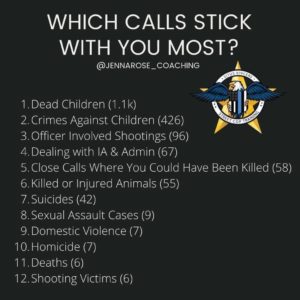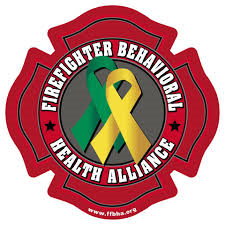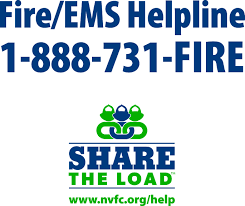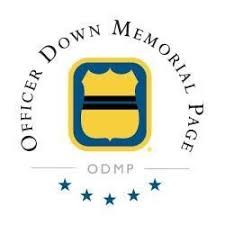Dreams – Some Never Go Away
Don’t let your Head get inside your “Head”
 We all dream; sometimes they are good, and sometimes they’re not. While sleeping, dreams can be extraordinarily vivid or emotional, being a collection of images, ideas, and feelings. They might be ambiguous, transient, perplexing, or even uninteresting. While some dreams are cheerful, others are frightening or depressing. Sometimes these dreams are nightmares, and sometimes they never go away.
We all dream; sometimes they are good, and sometimes they’re not. While sleeping, dreams can be extraordinarily vivid or emotional, being a collection of images, ideas, and feelings. They might be ambiguous, transient, perplexing, or even uninteresting. While some dreams are cheerful, others are frightening or depressing. Sometimes these dreams are nightmares, and sometimes they never go away.
First Responders experience many difficult situations every day. Calls that deal with dead children are by far the worst. They are the calls that stick with you, the calls that nightmares are made of; they are the calls that let your Head get inside your “head.
When I lie down, I say, When shall I arise, and the night be gone? and I am full of tossings to and fro unto the dawning of the day.
Job 7:4 KJV
Located in the high desert region of northern Los Angeles County, the Antelope Valley is a melting pot. Land wise, it is over two and one-half times larger than the City of Los Angeles. It consists of several unincorporated communities and the cities of Lancaster and Palmdale, which contract with the County of Los Angeles for Fire and Law Enforcement services. It is Los Angeles Sheriff’s territory. Before 1996, the vast area was policed by deputies from the Sheriff’s Antelope Valley Station (AVS), located at 10th Street West and Avenue J, Lancaster.
In the fall of 1995, I was working patrol in Lancaster, unit 111D (one-eleven David) day shift, 6 AM to 2 PM. It was about twenty minutes to Two, and I was heading to the “pumps.” I planned to refuel my radio car, clean up my MDT log, and get off work on time, a rarity at such a busy station. I was traveling northbound on 10th St West at Ave J-4, about a quarter-mile from the stations’ driveway.
The traffic on the radio was normal until the soft tone of the Emergency Radio Dispatcher (ERD) changed to a slightly louder tone. Her words were stern and deliberate.
“Attention Antelope Valley Units in the City of Lancaster, any unit to respond code-3 (emergency lights and siren), 902R (rescue responding) baby with a head injury, 432** 32nd Street West, any unit in one or less?”
Crickets, she again stated,
“any Lancaster unit to respond code-3, 902R baby with a head injury, 432** 32nd St West?”
Again crickets,
“any unit to respond?”
As she announced the call, I had already started calculating how much time and what route to take. I knew the street well and that L.A. County Fire Station 134 was roughly ½ mile away. I was also getting closer to the station’s driveway.
“Any unit in three (minutes) or less? In four or less? Any Lancaster unit to respond, 902R 432** 32nd Street West?
Realizing that no one else was going to respond, I grabbed my microphone and said,
“one-eleven David in 3-4 from the station.”
She replied,
“111D respond code 3.”
The entire radio exchange took less than 10 seconds.
I replaced my radio microphone, turned on my emergency lights, and activated my siren in one swift move. I acknowledged the call on my MDT, put myself en route, and made a U-turn on the busy four-lane street at the stations’ driveway. 32nd Street West was 3 ½ miles away.
I got into the number one southbound lane, pushed the accelerator to the floor, waking up the LT1 engine in my Chevy Caprice radio car. I hit Ave J-8 on a green; the next light was at Ave K, a major intersection. As I reached the intersection, the light turned red for north and southbound traffic; I slowly cleared the intersection lane by lane and continued to Ave K-8. All the while, I was hoping that F/S 134s would beat me to the call.
As I turned right onto K-8, I went over the freeway overpass giving me a clear view of the traffic on K-8. I didn’t see any fire engine in front of me. I hit 20th Street West on a green light allowing me to maintain my speed. As I approached and passed 25th Street West, I kept my eye on Fire Station 134, which was on 25th W, just north of K-8. I saw no activity, and the apparatus doors were closed; I hoped they were on scene.
The next intersection was at 30th Street West, another major intersection. I had the green and blew through the intersection at 70+ and started to slow for my right turn onto 32nd West. As I turned onto 32nd W, “Big Red” (134s) was not there. I pushed my MDTs 10-97 (arrived at scene) button and stopped mid-block in front of the well taken care of two-story house.
On most rescue calls, especially those involving children, there is some activity inside and outside. The front door is opened, and the caller is frantic. This call was different; the street was quiet, no one was outside waiting for our arrival. As I got out of the radio car, an eerie feeling went through my body, telling me this was more than just a baby with a head injury.
I got to the front door, which was locked, and knocked on it. BAM-BAM-BAM, the type of knock that could be heard two blocks away, at the same time loudly announcing “Sheriff’s Department.” A few seconds later, a female answered the door and told me her son was upstairs in the master bedroom; she was obviously in shock.
I ran up the stairs, and as I entered the bedroom, I saw an eleven-year-old boy lying on the floor; he was on his back, his head was in a northerly direction. On the left side of his head, about a foot away, was his mostly intact brain; flies were circling the gaping wound. A stainless steel .357 caliber Smith and Wesson revolver was near his right hand. The boy was dead from a self-inflicted gunshot.
His mother returned to the phone and talked to the 911 operators from the Sheriff and Fire Departments. I also spoke to the 911 operators and learned that the child’s father was at work as a Los Angeles City Firefighter.
A few minutes later, fire arrived, and the paramedics officially pronounced the boy dead. I made the notifications, calling the Watch Commander, Homicide, and the Coroner’s Office. I also requested a Sheriff’s Chaplain response for the family. About an hour later, a PM shift unit relieved me who would handle the call. I drove back to the station, refueled the car, argued with the Watch Commander about overtime, changed clothes, and went home.
This was not my first dead kid call, nor would it be my last. This was just another call that would stick with me. There was no debriefing, no counseling, no nothing. There was compartmentalization; there were the images and the bad dreams.
When thou liest down, thou shalt not be afraid: yea,
thou shalt lie down, and thy sleep shall be sweet.
Proverbs 3:24 KJV
Since the beginning of time, people have tried to study why we dream, and while there are several theories, there is no real consensus. The best science can suggest about why we dream is to:
- Process emotions
- Gain practice confronting potential dangers
- Gain practice facing potential dangers
- Gain practice confronting potential dangers
Dreams are believed to be real-life episodes that are interwoven with past experiences. Nightmares are also dreams, dreams that usually cause a negative emotional response.
REM sleep is an example of a silent period. This stage of sleep is characterized by rapid eye movement, an irregular heartbeat, and faster breathing rates. REM sleep is divided into four or five periods, each accounting for about 20% of our entire sleep time.
 Anxiety, trauma, and stress are the common triggers for nightmares and usually occur when REM intervals are longer, about halfway through our sleep time. Among those suffering from PTSi, nightmares are the most common complaint. According to a 2009 study by the University of Pittsburg School of Medicine, 80% of the people experiencing PTSi have frequent nightmares. A 1998 study on Vietnam Veterans showed that 52% of combat veterans suffered from nightmares several times a week.
Anxiety, trauma, and stress are the common triggers for nightmares and usually occur when REM intervals are longer, about halfway through our sleep time. Among those suffering from PTSi, nightmares are the most common complaint. According to a 2009 study by the University of Pittsburg School of Medicine, 80% of the people experiencing PTSi have frequent nightmares. A 1998 study on Vietnam Veterans showed that 52% of combat veterans suffered from nightmares several times a week.
Since trauma triggers nightmares, that incident is stored in your brain. In the article “Trauma and the Brain,” the authors’ Dawn McClelland, Ph.D., and Chris Gilyard, MA, write, “When a trauma occurs, people enter into a fight, flight, or freeze state, which can result in the prefrontal cortex shutting down.” They further state, “The amygdala stores the visual images of trauma as sensory fragments, which means the trauma memory is not stored like a story, rather by how our five senses were experiencing the trauma at the time it was occurring. The memories are stored through fragments of visual images, smells, sounds, tastes, or touch.” Extreme trauma can become a deeply embedded memory.
Our brains hide our fearful, stressful, anxiety-laced, and traumatic memories. These repressed memories come out in the sleep state and hijack our dreams, turning them into nightmares. Eventually, suppressed emotions lead to depression, PTSi, and dissociative disorders.
The Bible mentions dreams and how God used dreams to communicate with His prophets. Nightmares are also in the stories of the Old Testament. The book of Daniel tells how nightmares drove Nebuchadnezzar to madness living like an animal in the wilderness (Daniel 5).
Genesis 41 tells us that Pharaoh had a nightmare depicting seven skinny cows eating seven fat ones, foretelling a seven-year famine that will take over Egypt after seven years of a bountiful harvest.
Matthew 27:19 tells us about the Good Friday dream Claudia Procula had involving her husband, Pontius Pilate, and his involvement with Jesus.
Scripture tells us that in the last days, God will communicate to us through visions and dreams (Acts 2:17). If we are to gain from our dreams, He will make it clear to us; if not, we should give it to God and let it rest.
I will both lay me down in peace, and sleep: for thou,
LORD, only makest me dwell in safety.
Psalm 4:8 KJV
Dead Children Calls
Do you still remember your first baby not breathing call? Do you wonder why the death of a child call is different from other rescue calls? Have you ever thought, why does this call linger within me? You cannot prepare yourself for calls that involve the death of a child. Children are innocent, trustful, curious, loving, and joyful. They are our future. Because of this, calls for service involving the death of children are the worst; they are “not normal” occurrences. They are hard on us.
It took years for the dreams to go away. I learned that I only had two choices in life. Put one foot in front of the other, go forward to the light, and live, or stay in the darkness and die. I chose life; I chose not to let my Head get inside my “head.”
“People die every day, ADW, hit & run, murder.”
“Most of the time we get involved.”
“But I’ll tell you something, when it happens to a child you don’t get used to it”
Officer Peter J. Malloy – Adam 12 – Season 1 – Episode 7
As First Responders, we took an oath to protect good and fight evil. Many have lost track of their priorities and have put the job first in their lives. If you are experiencing lower than usual sense of self-worth, depression or misplaced guilt, inability to specifically remember or talk about the trauma, feeling numb emotionally, dissociation (not aware of the present moment), a feeling of disconnection from their everyday lives, feeling hyper-aroused and vigilant for danger all the time, lashing out in irritability or unexplained anger, feeling jittery, or unable to concentrate on tasks at hand or other anxiety disorders, such as panic or intense distress, talk to someone and get help. Get back to the basics Put God First, Family Second, and the job further down in the order.
IF YOU HAVE THOUGHTS OF SUICIDE, GET HELP NOW
Law Enforcement Copline (800) 267-5463
Firefighters / Medics Fire/EMS HELPLINE (800) 731-FIRE (3473)










Outstanding article Danny on a much needed topic. Most first Responders don’t admit they are struggling with anything lest they be seen as weak. Keep up the good work my friend.
Blessed are the peace keepers , if not me then who?
Thank you Danny. After 31 years, the only nightmares I’ve had involved the 2 babies we rolled to the hospital at SIDS calls. I’ve been fortunate though, I’ve never had suicidal thoughts because of those dreams. After 6 years of retirement, those dreams are a little less frequent. But I’ve never been afraid to talk about them with fellow law enforcement. It really helped when another copper told me he had them as well. God bless